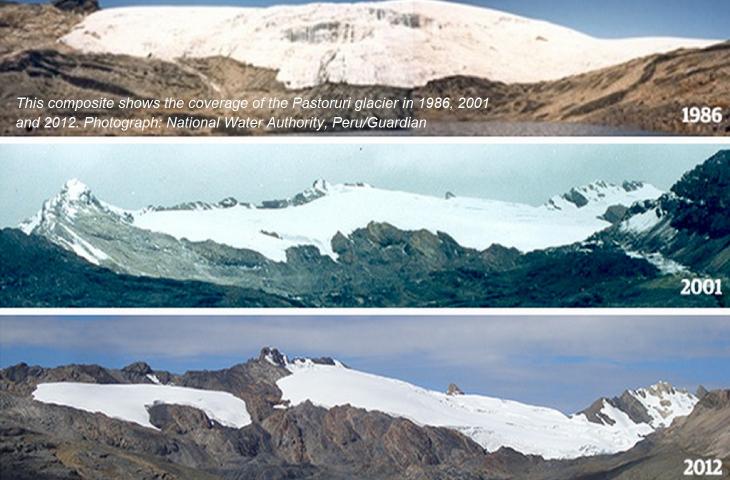MILAN – Water flows alongside the wall of ice and if you stand in silence and listen carefully, you can hear the cracking of the glacier as it shrinks. This is the experience of those who stand silently admiring the majestic Pastoruri of Peru, one of the largest glaciers in the world, as described by The Guardian.
The importance of the glaciers
The Andean nation is host to around 70% of the world’s tropical glaciers and, as explained by Selwyn Valverde, a guide at the Huascaran National Park, (declared a UNESCO biosphere reserve), they represent Peru’s main source of water. Local farmers are not only having to adapt to sudden changes in the weather, but also to the unexpected side effects of the “greenhouse effect”, such as the decline in water quality.
The side effects of the thaw
As mentioned above, not only is global warming reducing the overall surface area of the Peruvian glaciers (it is estimated that from 1970 till now, they have been reduced by 40%) but, at the same time, it has a negative effect on the productivity of the surrounding landscape. This is because, as the glacier recedes, rocks are left uncovered, which besides minerals, also contain heavy metals, like lead, cadmium and iron. Moreover, the melt-water carries these metals along with it as it runs down, affecting the fertility of the land. With the aid of Universidad Nacional de Santiago Antunez Mayolo, the farmers are at work adapting the wetlands of the plateau – which act like a sponge, slowly releasing the water from the melting glaciers – and combatting the decline in water quality.











